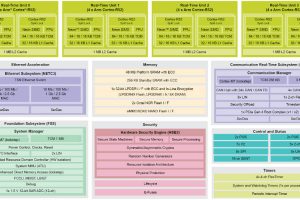 “Embedded networking products can run standard Linux applications such as Quagga or Sonic,” said NXP. “Ubuntu Core therefore makes full use of the LS1043A network and IO features, such as packet acceleration, to simultaneous support high bandwidth traffic over 802.11ac, and IoT data collection through Bluetooth LE, Thread or Zigbee.”
“Embedded networking products can run standard Linux applications such as Quagga or Sonic,” said NXP. “Ubuntu Core therefore makes full use of the LS1043A network and IO features, such as packet acceleration, to simultaneous support high bandwidth traffic over 802.11ac, and IoT data collection through Bluetooth LE, Thread or Zigbee.”
The Ubuntu image demonstrated allows device manufacturers to use ‘snaps’ – the cross-platform Linux packaging format – to build their applications.
“Snaps offer a number of features for device manufacturers along the software management lifecycle, from development to deployment and from security to business models,” said NXP. They allow developers to create, package, test and distribute self-contained applications based on existing Ubuntu and Linux libraries.
LS1043A is part of the QorIQ Layerscape family which offers security via the Trust Architecture trusted execution environment for applications.
“This complements the security features associated with snaps such as read-only images, authentication of the application origin, confinement, isolation and transactional updates,” said NXP, adding that the Ubuntu Core image is built from the ground up using snaps, so the device stack can updated, and rolled-back if updates fail.
 Electronics Weekly Electronics Design & Components Tech News
Electronics Weekly Electronics Design & Components Tech News



